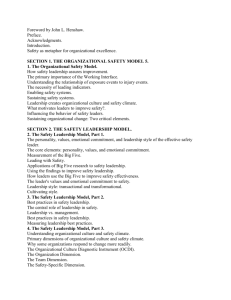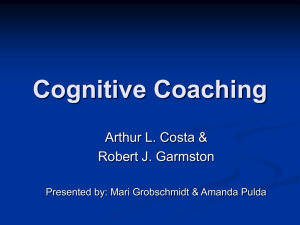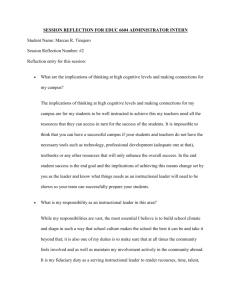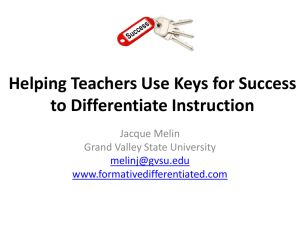Why Cognitive CoachingSM
advertisement
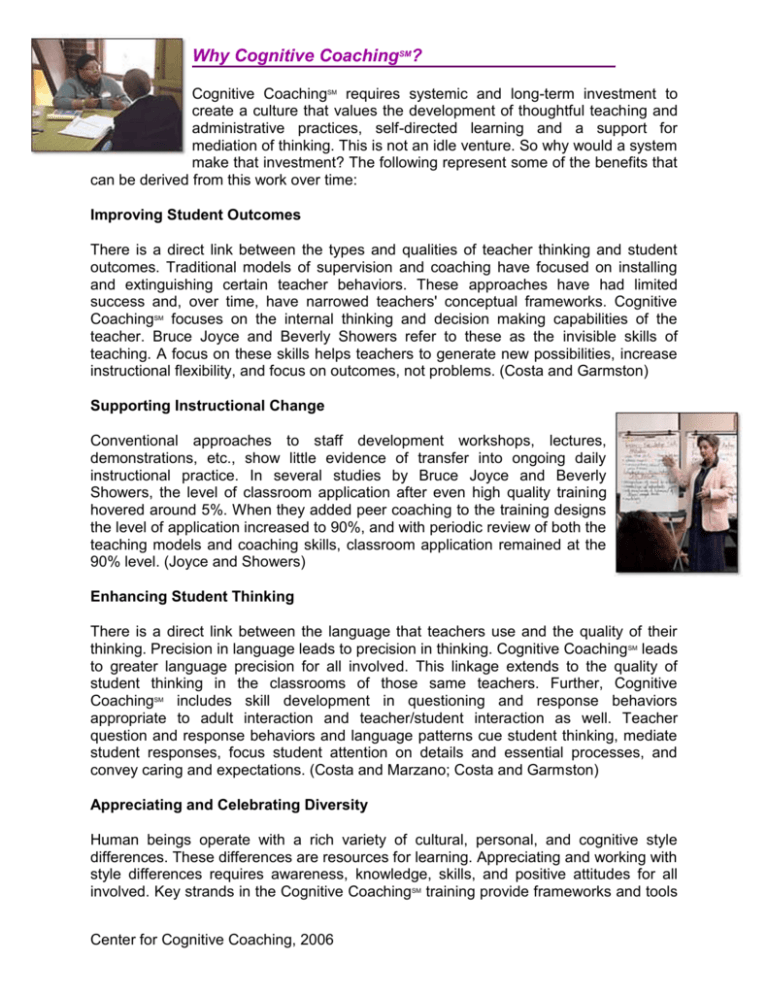
Why Cognitive CoachingSM? Cognitive CoachingSM requires systemic and long-term investment to create a culture that values the development of thoughtful teaching and administrative practices, self-directed learning and a support for mediation of thinking. This is not an idle venture. So why would a system make that investment? The following represent some of the benefits that can be derived from this work over time: Improving Student Outcomes There is a direct link between the types and qualities of teacher thinking and student outcomes. Traditional models of supervision and coaching have focused on installing and extinguishing certain teacher behaviors. These approaches have had limited success and, over time, have narrowed teachers' conceptual frameworks. Cognitive CoachingSM focuses on the internal thinking and decision making capabilities of the teacher. Bruce Joyce and Beverly Showers refer to these as the invisible skills of teaching. A focus on these skills helps teachers to generate new possibilities, increase instructional flexibility, and focus on outcomes, not problems. (Costa and Garmston) Supporting Instructional Change Conventional approaches to staff development workshops, lectures, demonstrations, etc., show little evidence of transfer into ongoing daily instructional practice. In several studies by Bruce Joyce and Beverly Showers, the level of classroom application after even high quality training hovered around 5%. When they added peer coaching to the training designs the level of application increased to 90%, and with periodic review of both the teaching models and coaching skills, classroom application remained at the 90% level. (Joyce and Showers) Enhancing Student Thinking There is a direct link between the language that teachers use and the quality of their thinking. Precision in language leads to precision in thinking. Cognitive Coaching SM leads to greater language precision for all involved. This linkage extends to the quality of student thinking in the classrooms of those same teachers. Further, Cognitive CoachingSM includes skill development in questioning and response behaviors appropriate to adult interaction and teacher/student interaction as well. Teacher question and response behaviors and language patterns cue student thinking, mediate student responses, focus student attention on details and essential processes, and convey caring and expectations. (Costa and Marzano; Costa and Garmston) Appreciating and Celebrating Diversity Human beings operate with a rich variety of cultural, personal, and cognitive style differences. These differences are resources for learning. Appreciating and working with style differences requires awareness, knowledge, skills, and positive attitudes for all involved. Key strands in the Cognitive CoachingSM training provide frameworks and tools Center for Cognitive Coaching, 2006 for coaches to work with other adults and with students in open and resourceful ways. (Costa and Garmston; Witkin; Bandler and Grinder) Promoting Collegiality Problem solving, creativity, and faculty collaboration are powerful sources of teacher renewal. Collegiality is not the same as conviviality. True professional collegiality is built upon shared norms of interaction that focus on the many roles of teachers as they share materials and ideas and seek and offer assistance to one another. The Cognitive CoachingSM model provides a comfortable format for professional dialogue and develops the skills for deep instructional planning, reflection on practice, and problem solving. (Little; Rosenholtz; Costa and Garmston) Developing Teachers’ Conceptual Development Cognitive CoachingSM enhances and stretches the conceptual frameworks of teachers. Teachers with higher conceptual levels are more adaptive and flexible in their teaching style, approaches to students, and classroom designs (Hunt; Harvey). They employ a broader repertoire of teaching strategies and a wider range of coping behaviors (Hunt and Joyce). High concept teachers are more effective with a wider range of students, including students from diverse cultural backgrounds (Harvey, Prather, White & Hoffmeister; Hunt). And they are more stress tolerant and able to deal with ambiguity. (Tomlinson and Hunt; Gordon; Suedfeld) Building School Culture Good instruction does not exist in a vacuum. Effective teachers working in isolation cannot create cohesive instructional patterns that serve students in a cumulative fashion. The culture of the school--the pattern of adult interaction, the traditions, rituals, and shared norms--has a strong influence on the instructional outcomes for students. Cognitive CoachingSM promotes cohesive school cultures where norms of experimentation and open and honest communication enable everyone in the school to interact in healthy and respectful ways. (Saphier and King) Center for Cognitive Coaching, 2006


